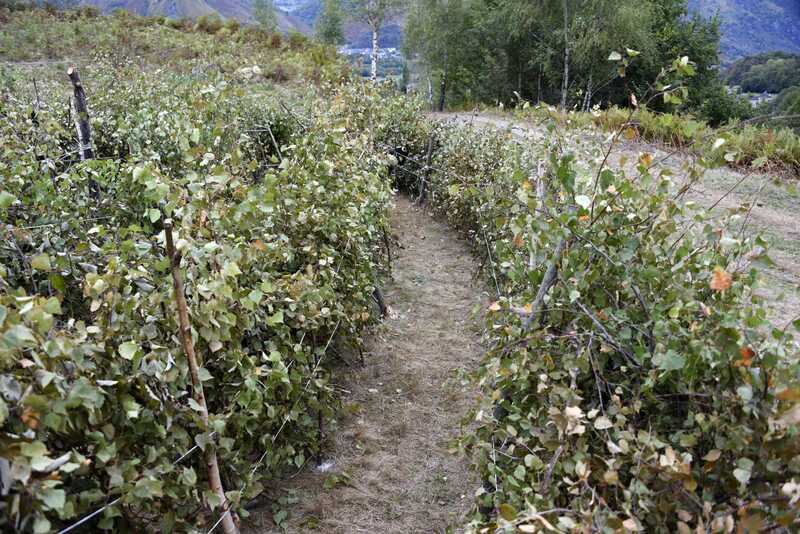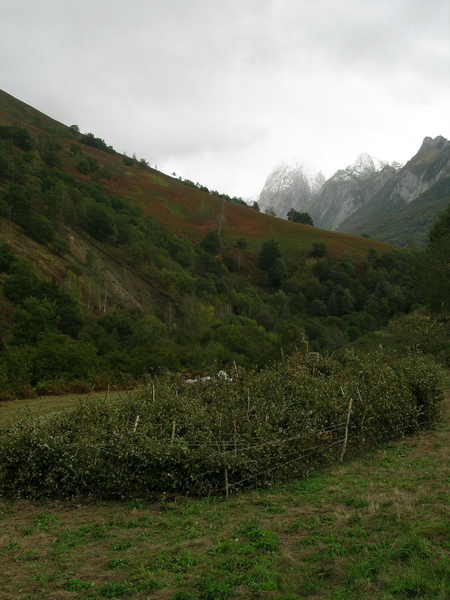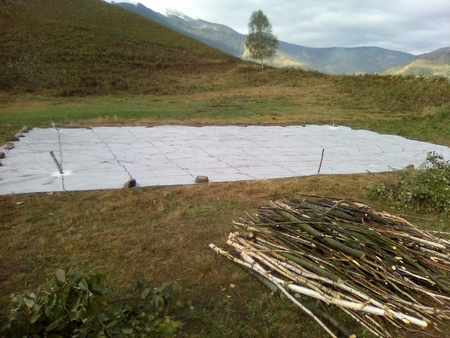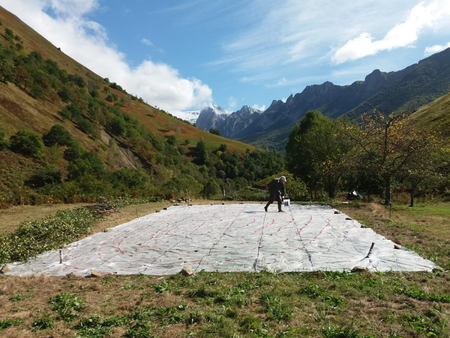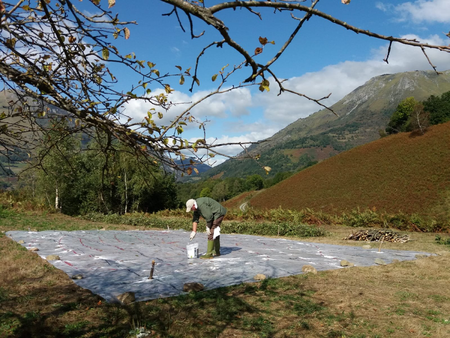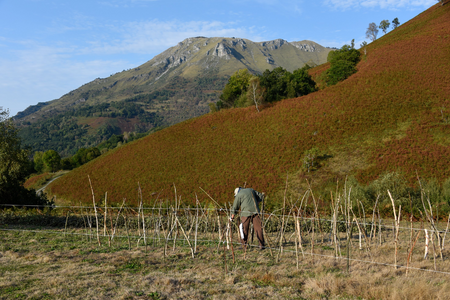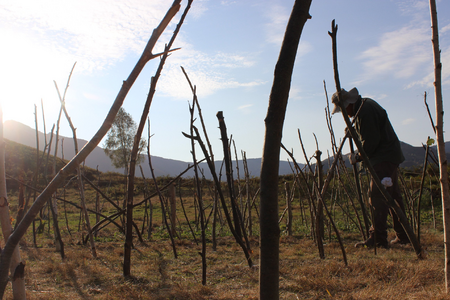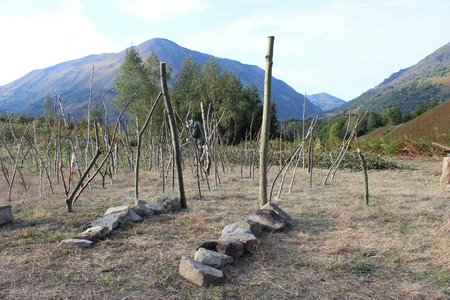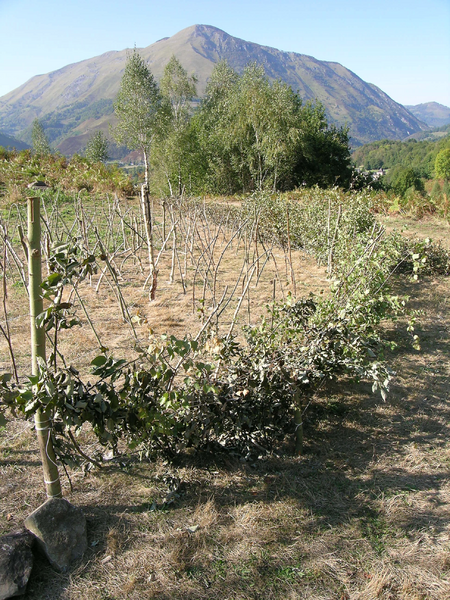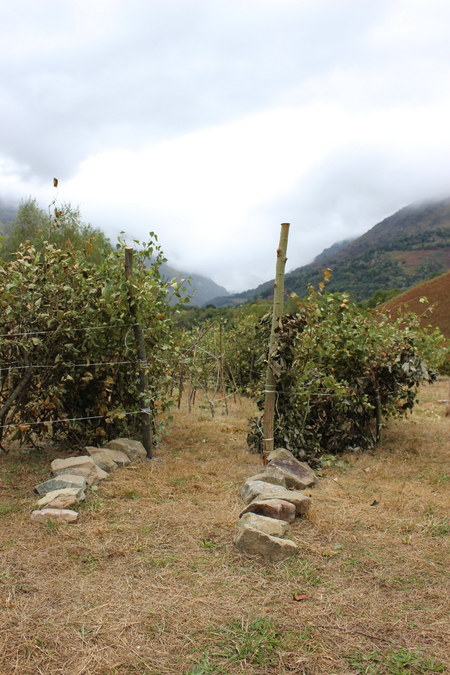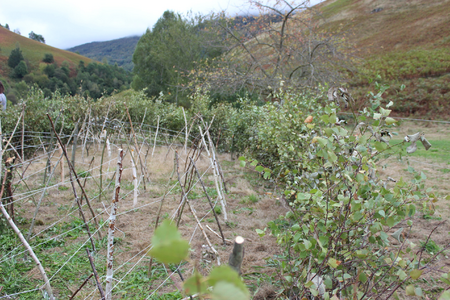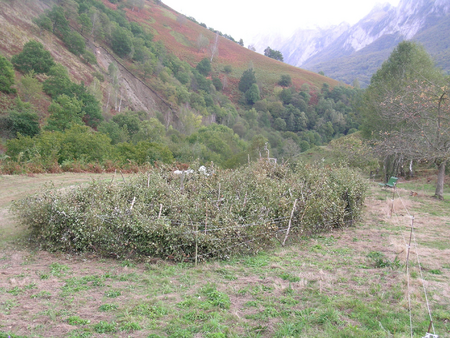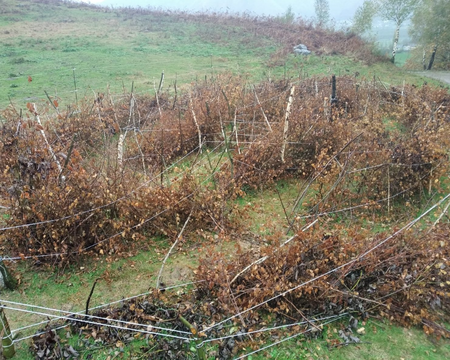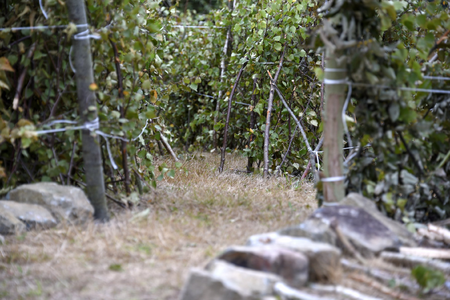« Dans le noir, nous verrons clair mes Frères ! Dans le labyrinthe, nous trouverons la voie droite ! »
(Henry Michaux)
« Do not go where the path may lead, go instead where there is no path and leave a trail. »
(Ralph Waldo Emerson)
My work revolves around the idea of "imprint", approached from different angles: our existential imprint on this earth, the ecological footprint of man, what human and non-human traces tell us in the natural cycle, making us part of an indissoluble whole.
Reasoning the labyrinth as a key element to face the heart of my poetics, namely land art to connect the interior landscape and the exterior landscape and the relationship between man and nature and between man and man, I wanted to explore anthropologically the labyrinth as a constant theme of European art.
From a local-global relationship perspective, I returned physically and symbolically to the Alpine valleys where my family is from. In recent years, it has become relatively famous among prehistoric scholars for the presence of "Masso Falchero", a huge millstone that takes its name from the family that owned it. The peculiarity of this stone is that it was engraved in prehistoric times with representations such as bas-reliefs that researchers have traced to the representations of the rituals inherent in the cult of the Great Mother, a cult in relation to which we find labyrinthine representations in different regions of the Alps. It is curious that from a linguistic point of view in the dialect spoken in “my” valley unlike the neighboring valleys all the important elements of daily life are feminine. In addition, it is emblematic, in my childhood memories, how in my family's home village old women, and not old men, played a key role in collective decisions concerning community life.
I thought of the graphic and formal relationship between our fingerprints, the symbol par excellence of our uniqueness and our individuality, and the symbol of the labyrinthine representations of communities united by daily practices and cults that attach them deeply to the earth.
In particular, my attention has focused on the thumb as a symbol of human skill and evolution and, in particular, a symbol of female talent and power: the opposable thumb, the thumb injured by the spindle in the ancestral fairy tale, thumbs for sewing and (above all) embroidery, thumbs to mark in the ancient practices of magic with mud and ashes, your thumb to support a child's head, thumb to assess and sample distances and shapes, as an artist, the thumb to clean the kids' faces, the thumb to hitchhike and so on! Nevertheless, the thumb is also used for counting banknotes (a gesture I associate with men) and today the thumbs are used for text messaging and for playing video games (is that an involution?). So I thought of creating an ephemeral labyrinth based on the graphic synthesis of the thumbprint.
I was struck by the image of Accous and its valley, and the fact that it has always been an important transit point to the Iberian Peninsula, connected to a route like that of Santiago de Compostela which follows paths of even older routes that linked the old continent to the four corners. I thought about how the two great mountain ranges of the Pyrenees and the Alps, far from being physical barriers in reality thanks to their valleys, have always favored exchanges and movements. I thought of an ideal link between the Aspe valley and "my" Val di Viù, part of a path that crosses the Italian peninsula and the Alps connected Greece with England, a route taken later in the Middle Ages by pilgrims from all over Europe to Rome and Holy Land. I thought that in such a place a labyrinth, symbol of spiritual journey, could find an ideal location. I thought of current events. The theme of travel, thinking of how the labyrinth can express the complexity and the labors and tortuosity of those who travel out of necessity and for change, in search of a better life for thousands and thousands of kilometers, and how the Alps and the Pyrenees, always a place of connection and exchange, become insurmountable barriers due to new frontiers dictated by man. Moreover, I think of the fingerprints taken, the thumbprints, taken even by young children so that men can lay down, imprison, and repel other men.
What is our current footprint? What are its meanings? What are its implications and labyrinthine facets?
The imprint is the imprint of my grandmother, the last descendant of these women from "my" valley. The idea of the grandmother's fingerprint lies in the homage to an idea. In my idea, it is an ephemeral labyrinth, made of natural materials and intended to fade slowly and naturally over time, made with the materials available on site, guided by the "genius loci". The place (and the premises, after all, a place and its spirit are or are given especially by those who live there) will inspire the best formal solution on the spot to concretize the concept by expressing all the meanings contained therein.
PHOTO CREDIT:
MILA BRAUDEY for photos n. 6 / 7 / 9 / 10 / 11 / 12 / 14 / 15 / 16 / 19
GREGOIRE LAVIGNE for photos n. 1 / 8
PHILIPPE LE COZ for photos n. 18
thank you so much.
And really special thanks to all "Phonies Bergères" organization and members, to Cler&Sandrine of "Maison Despourrins" and to all Accous friends.
EMPREINTE LABYRINTHE
Datenblatt
- Abmessungen
- 150cm, 900cm, 1400cm (Höhe, Breite, Tiefe)
- Jahr
- 2020
- Material
- Stein, Naturstoffe, Holz
- Stil
- Fantasie, Interaktiv, Land Art
- Thema
- Spiritualität, Gesellschaft, Natur
